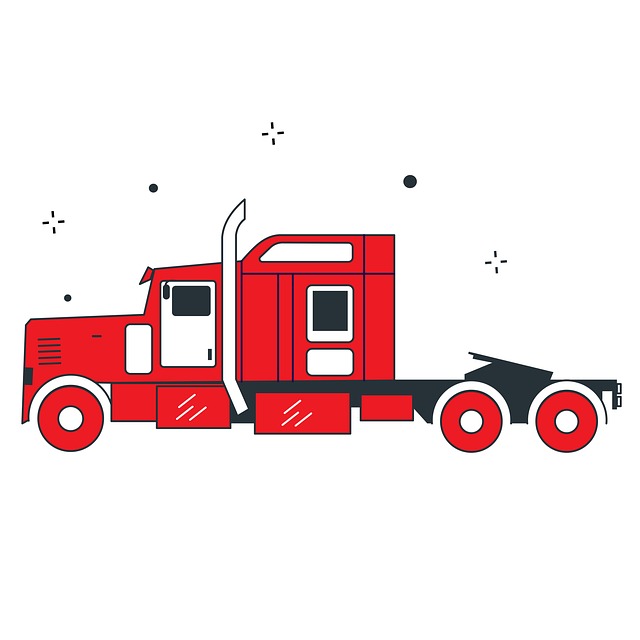Looking to register your car in California? This comprehensive guide walks you through every step of the process, from understanding the requirements to receiving your official documents. We’ll focus on key aspects like gathering essential paperwork, performing a DMV VIN verification, completing applications, and paying fees accurately. By following these simple steps, you’ll be on your way to securing your vehicle’s registration in no time.
- Understanding the California Car Registration Process
- Gather Required Documents for DMV Visit
- Perform VIN Verification: Steps and Importance
- Complete Application and Pay Fees
- Receive Your Vehicle Registration Documents
Understanding the California Car Registration Process

Understanding the California Car Registration Process begins with knowing that the Department of Motor Vehicles (DMV) is responsible for administering vehicle registration and titling. The process involves several steps, including verifying the Vehicle Identification Number (VIN) to ensure the vehicle’s authenticity and history. This is typically done through a DMV VIN verification, which checks the vehicle’s mileage, ownership history, and any reported accidents or defects.
For added convenience, many residents opt for a mobile vin inspection or use a mobile vin verifier to streamline the initial verification process. These services can be particularly helpful when preparing to register a used car, as they provide a quick and accurate snapshot of the vehicle’s past, ensuring a more informed decision during the registration process at the DMV.
Gather Required Documents for DMV Visit

Before visiting the California DMV to register your car, ensure you gather all the necessary documents for a smooth process. One crucial step is to obtain a Vehicle Identification Number (VIN) verification, which can be done through a mobile vin verifier or by scheduling a vin inspection at a designated location. This involves cross-referencing your vehicle’s unique VIN with the DMV’s records to establish its authenticity and history.
Along with this, prepare your car’s registration certificate from the previous state (if transferring), proof of insurance, and a completed Vehicle Registration Application form. Additionally, bring valid identification documents like a driver’s license or passport. These documents are essential for verifying your identity and ensuring compliance during the registration process at the DMV.
Perform VIN Verification: Steps and Importance

Before registering your car in California, it’s crucial to perform a Vehicle Identification Number (VIN) verification. This process involves checking the accuracy of the VIN and ensuring that the vehicle matches the information on record with the California Department of Motor Vehicles (DMV). You can do this through a mobile vin verifier or by scheduling a vin inspection at a DMV office.
To start, locate your car’s VIN—it’s typically found on the driver-side door frame—and compare it with the details in your ownership documents and registration records. If there are any discrepancies, you’ll need to address them before proceeding. A mobile vin verification service can provide immediate feedback, while a vin inspection at the DMV will involve a thorough cross-check of the vehicle’s identity. Ensuring accurate VIN data is essential for legal compliance and securing your car’s registration.
Complete Application and Pay Fees

To register your car in California, you’ll need to complete an Application for Title and Registration (form DV367). This form requires detailed information about your vehicle, including its make, model, year, and unique Vehicle Identification Number (VIN). Accurately completing this section is crucial, as it facilitates the DMV VIN verification process. Once you’ve filled out the application, you’ll need to pay the associated fees. These include a registration fee, a title fee, and a vehicle classification fee, which vary based on your vehicle’s type and age.
After submitting the completed application and required fees, you can opt for a mobile vin verifier or conduct a mobile vin inspection to ensure your vehicle meets all necessary standards. This step is important as it confirms your car’s condition and helps avoid potential issues during the registration process.
Receive Your Vehicle Registration Documents

After submitting your application for vehicle registration at the DMV, it’s crucial to receive and review your vehicle registration documents thoroughly. These will include key information about your car, such as its make, model, year, and unique Vehicle Identification Number (VIN). A mobile VIN verifier or mobile VIN inspection tool can be helpful in validating this critical data independently. By cross-referencing the details against official records, you ensure accuracy, which is essential for future reference and compliance with California’s vehicle registration regulations.
The DMV’s vin verification process ensures that your car’s information matches the manufacturer’s records. This not only safeguards against fraud but also helps maintain the integrity of California’s vehicle registration system. Keeping accurate records is vital, especially when it comes to resolving disputes or transferring ownership in the future. So, take time to scrutinize these documents and double-check any details before storing them securely for future reference.
Registering a car in California involves understanding the state’s process, gathering essential documents, completing a DMV VIN verification, and submitting an application with relevant fees. After these steps, you’ll receive your vehicle registration documents, marking the official recognition of your car by the Golden State. Remember, proper documentation and accurate information are key to a smooth registration experience.



